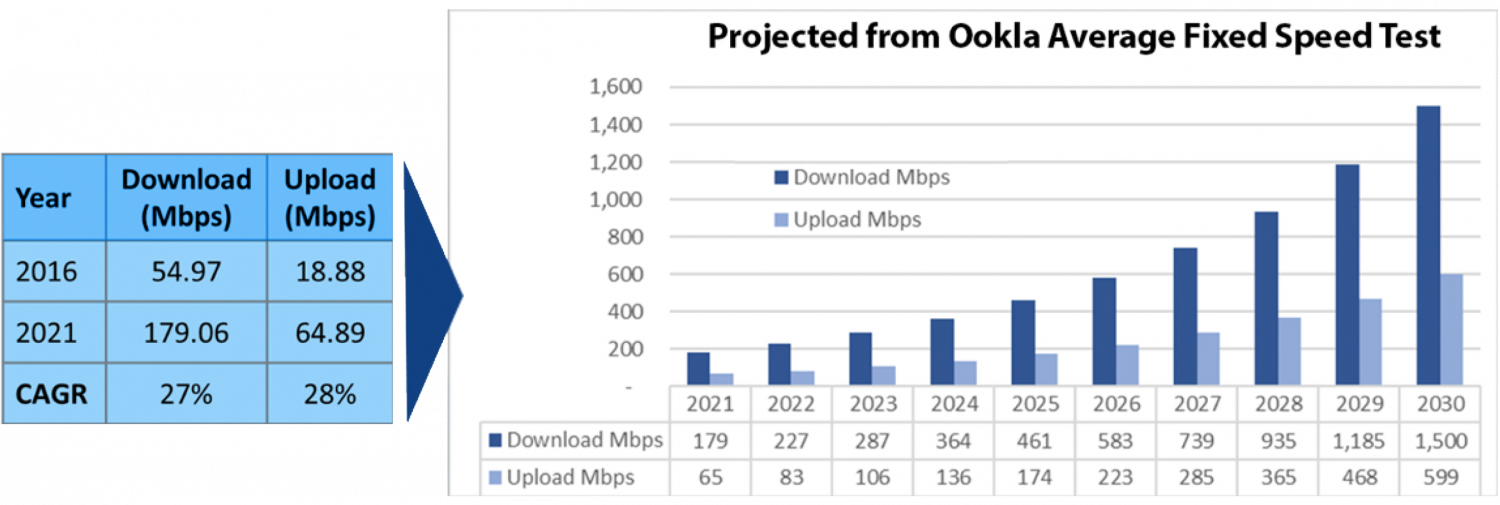Article written by NTCA – The Rural Broadband Association and FiberBroadband Association
- The Fastest Internet
- The Best Investment
- More Connected Education
- Essential Healthcare
- 5G Access
- More Jobs
- Better Gaming
- Faster Streaming
- Robust Teleworking
Broadband access is a critical American bi-partisan issue. Fiber internet is the best way to meet the country’s growing needs for robust and reliable broadband connections that will last well into the future.
Broadband has far-reaching positive effects for urban and rural residents alike, creating efficiencies across numerous industries and enhancing quality of life for millions of Americans.
While many technologies enable broadband, fiber provides the best levels of performance – symmetrical download and upload speeds and low latency to allow children to learn remotely and adults to engage in skills training. Fiber supports our livelihoods by connecting us to job opportunities, facilitating precision agriculture, and seamlessly connecting us virtually with health-care professionals, saving time and money. Fiber-powered broadband enables and enhances the delivery of news, entertainment, gaming and social platforms, helping us stay in touch with friends and family. In fact, while other technologies enable broadband, they too depend on fiber to deliver and will continue todo so as data demands increase.
“Why would one not pick the fiber every time? Why do you have to be ‘technology neutral’ when there are clear differences between the performance and the incremental upgrade costs of the technologies?”
– Paul de Sa, former Chief of the FCC’s Office of Strategic Planning and an author of the National Broadband Plan
Fiber Benefits
Education
Increased bandwidth is needed to create educational opportunities for kids at home and in school, including video conferencing and educational applications.
Teleworking
Video conferencing is the new norm and virtual private networks (VPNs) provide the security and fiber the capacity needed to transact business; teleworking is made possible with fiber.
Telehealth
Especially in rural areas, where people must travel long distances to get to their doctors, specialists or a hospital, telemedicine is critical.
Economic Development / Smart Communities
Fiber-based networks improve communities and make them attractive destinations for people and businesses to relocate, which prevents brain drain. As critical infrastructure, fiber helps communities see immediate benefits:
- Gigabit broadband speeds and beyond
- Significant economic impact
- Jobs (in agriculture, health, energy), economic diversification
- Smart grid modernization 43% reduction in power outages1
- Increased home values: a Fiber-to-the-home connection can raise a home’s value by 3%.2
Precision Agriculture
Fiber-based networks and technologies allow farmers to increase crop yield while preserving precious natural resources.
5G Superiority
Fiber makes 5G work because the small cells, antennas, and towers that send 5G signals to mobile devices are supported by fiber infrastructure.
“Fiber deployed both aerially and underground is expected to be essential for 5G networks and the high-speed broadband services they will provide. Indeed, fiber is likely to serve as the backbone upon which next-generation wireless networks and services are built.3
– Wireless Infrastructure Association
What’s Coming in the Future
Ookla, the global speed test service, reported average U.S. fixed broadband speeds of 179/65 Mbps in January 2021. If the growth rates of the past five years continue over the next 10 years, the average U.S. fixed broadband speeds will be 1.5 Gig/599 Mbps by 2030 – broadband speeds that only fiber will realistically deliver.

Why is Fiber the Best Choice for Future Connectivity?
It’s the Fastest
Fastest. It uses fiber-optic cables to send data to and from your connected devices. “Light is ridiculously faster than electricity at doing this which means fiber internet is lightyears… faster than cable or DSL.”4 Even the most cutting-edge wireless networks depend upon fiber to enable higher speed services. “Ultimately, the quality and reliability of the wireless network will depend on the wireline (fiber) network carrying traffic to and from the 5G small cells.”5
It’s Symmetrical
Fiber enables symmetrical upload and download speeds. Upload speeds enable better experiences when it comes to video conferencing, streaming, and gaming. File uploads and VPNs also perform far better on symmetrical networks. Other technologies have significantly slower upload speeds.
It’s Dedicated
With fiber-to-the-home (FTTH) your bandwidth is yours and you are not sharing it with or affected by your neighbor’s consumption. While other internet technologies may include fiber to a certain point, in many cases with other technologies, consumers are sharing their connections and service is affected by all of those sharing bandwidth. With FTTH, your bandwidth is yours and your neighbor’s use doesn’t affect your experience.
It’s Future-Proof and Sustainable
Fiber is the best choice for ensuring that a network being built now will be capable of satisfying user demand over its useful life. Fiber anticipates future demands and allows for services that will remain affordable and efficient for years to come. It is durable, scalable, easier to update and less costly to maintain. “Once fiber is laid down, network upgrades cost less than those for other broadband technologies.”6
It’s a Better Investment
“Not only do FTTP networks have a lower 30-year cost of ownership, but they also have a greater revenue potential when compared to the other technologies because of their greater broadband capacity.” – Vantage Point Solutions7
It’s Reliable
Fiber is the most reliable internet technology, delivering a signal less susceptible than cable, copper, or spectrum-based services to interference or deterioration of performance due to distance or climate conditions.8
It’s Addressing Reality
“If you have a family of four working and learning at home, a total of 25 Mbps is just not adequate. You can only jam so much information down a single wire unless that wire is Fiber.” – Dr. Christopher Ali, a University of Virginia associate professor who studies the digital divide (@Ali_Christopher)
1 Chattanooga Economic Impact Study, Professor Bento Lobo, UT-Chattanooga http://bit.ly/fiberdeliverssmartgrid 2 National Association of Realtors http://bit.ly/fiberdelivershomevalue 3 Wireless Infrastructure Association http://bit.ly/fiberdelivers5G 4 https://dailywireless.org/internet/how-does-fiber-internet-work/ 5 https://www.rcrwireless.com/20190220/opinion/readerforum/fiber-optic-5g-reader-forum) 6 Politico http://bit.ly/fiberdelivers5gtoday 7 Vantage Point Solutions, Greenfield white paper, Foundation for Rural Service 8 DailyWireless http://bit.ly/fiberdeliversfaster